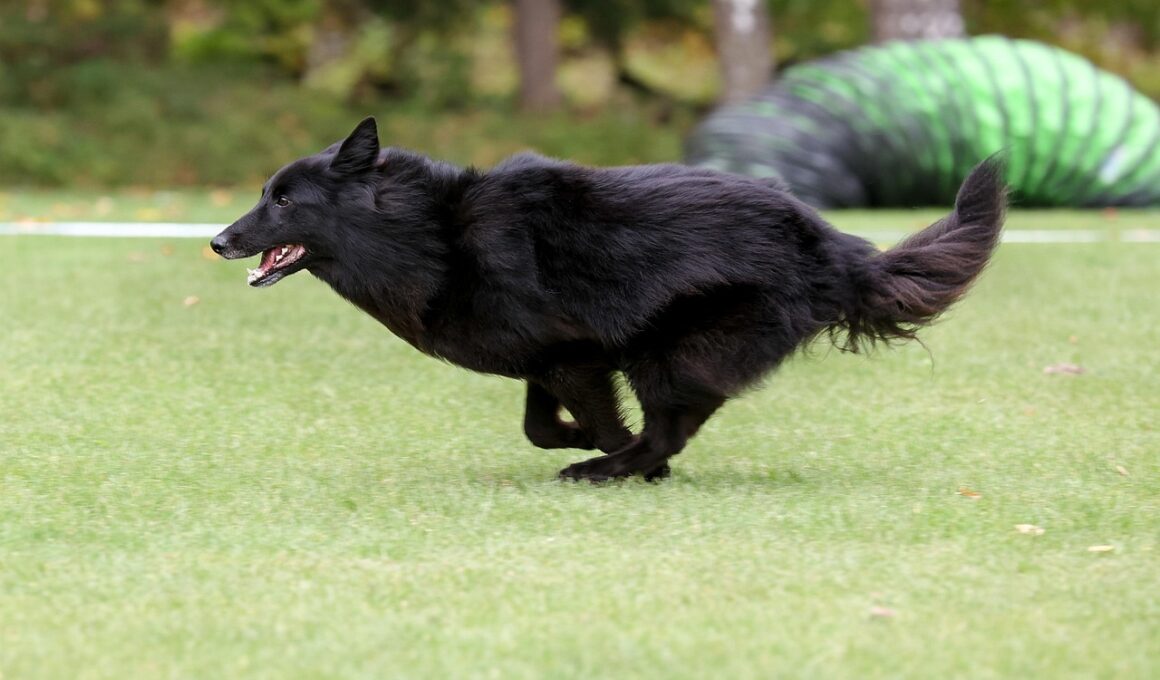Optimizing Your Agility Ladder Setup for Small Spaces
Agility ladders are perfect for improving footwork and enhancing speed. Small spaces can make it challenging to set up these ladders effectively. However, creative solutions exist to maximize the usage of agility ladders in compact areas. The first step to optimizing your agility ladder setup is thinking vertically instead of horizontally. By utilizing wall-mounted solutions, you can set an agility ladder vertically for drills without taking up floor space. This technique also allows the incorporation of other vertical training equipment. You can combine wall drills with basic mobility patterns. Ensure to check the space around you to prevent any accidental bumps. Viewing your available space may expose unique features advantageous for agility training. A small backyard or a dedicated training corner in a gym can become effective. Use tape or cones to mark boundaries if an actual ladder isn’t available, enabling drills that imitate ladder exercises. Remember, having a clear zone is key when doing agility drills, regardless of room size. Establish a routine that includes flexibility and foot coordination regardless of set-up adjustments. You can still maintain an effective training regime for agility.
Choosing the Right Equipment
Choosing appropriate agility ladder equipment tailored for small areas is essential. Assess the available space before purchasing a ladder. There are various sizes and styles, all executed differently based on client needs and space constraints. Consider adjustable agility ladders, as they can be folded or shortened as necessary. This flexibility makes them suitable for various training activities and setups. Lightweight models are also beneficial as they can easily be relocated. Check for the durability of the material as well. High-quality stitching and strong rungs will ensure your ladder withstands rigorous workouts. Look for non-slip features, as these will contribute to safety during training sessions. Ensure it fits your current fitness regime and can be used with other equipment. Once you have the appropriate ladder, think about training accessories you might need that align with your agility training focus. Incorporate cones, mini hurdles, or resistance bands to enhance your workout. All of these elements can create complex drills that keep workouts interesting within limited training areas. Planning workouts around the equipment will lead to improved performance and innovative techniques.
When setting up agility ladders in small spaces, consider the type of floor surface. Wood, grass, or rubberized flooring may influence your workout quality. Harder surfaces may not cushion your falls, while softer ground might impede swift movements. Depending on the flooring type, you might need additional equipment, such as a mat, ensuring your knees and joints remain safe during exercises. Adjusting the workout intensity according to the space is crucial. For example, limited room may require shorter drill sequences, focusing instead on form and coordination. You may consider transitioning traditional ladder drills into speed and agility movements performed in inches instead of feet. Emphasizing quick feet while maintaining proper form with the ladder on a tighter scale can be very effective. Also, remember to incorporate variety in your drills. Change foot patterns regularly to engage different muscles while maintaining enthusiasm. When utilizing spatial constraints, ensure your movements don’t sacrifice consistency over time. Create a schedule that keeps the drills evolving to avoid stagnation. Consistency in training will ultimately yield better results even when conditions seem less than ideal.
Designing Your Training Routine
Structuring a well-rounded agility training routine in smaller areas incorporates diverse exercises within a limited footprint. Begin with a warm-up that includes dynamic stretching to prepare your muscles and joints. Follow it up with quick footwork drills focused on specific goals, like improving lateral movement or forward speed. You can use the ladder for side shuffles or an in-and-out drill to target those areas effectively. Integrate agility ladder circuits into your workouts, mixing other types of equipment for comprehensive training. This allows you to incorporate strength elements while concentrating on agility. Circuits can include jumping jacks, rope skipping, or lunges interspersed with ladder drills to maximize engagement. Learning and utilizing time management is vital as well; do not spend too long on single exercises. Setting timed intervals can maintain high pacing, making the most of a small area and ensuring an effective workout without boredom. Stay mindful of rest times too to allow for optimal recovery while preventing fatigue. Evaluate your routine’s success regularly, adjusting as needed to comply with changing skill levels and preferences.
Maintaining motivation during agility training can be a challenge, especially in constrained spaces. Setting clear goals plays a vital role in sustaining your motivation. Frequent assessment and acknowledgment of progress in skills can make workouts feel fulfilling. By establishing both short-term and long-term goals, you allow measurable achievements that keep you psychologically engaged. Enlist a partner to conduct drills together; competition can heighten motivation. Consider narrowing your focus to refining one or two specific abilities per training session. This can provide you with clear direction during workouts. Performing periodic assessments of progress gives additional insights and highlights successfully achieved goals. Document your drills or achievements to visualize improvement over time. Planning to include new patterns or challenges goes a long way. Experimenting with workout variables, such as timing, movement complexity, or intensity, can inspire engagement and refresh training. Small rewards after completing challenging workouts can also sustain enthusiasm. Remember that agility requires both physical and mental components, and addressing both can enhance your performance. Prioritize enjoying the process while improving every bit, focusing on improvement rather than perfection.
Seeking Professional Guidance
Starting an agility ladder routine can be a personal journey, but seeking professional guidance could yield even greater benefits. Trainers with experience in agility and speed training can provide detailed insights and personalized approaches specifically tailored to small spaces. They can also assist in designing routines that challenge your current fitness level while providing safety and efficiency insights. Professional trainers may offer alternative equipment recommendations or advanced routines that effectively utilize space. Further, they can introduce breaking down complex movements into manageable related exercises, allowing easier learning and progression. A trainer can analyze your footwork and provide immediate feedback, correcting form to optimize performance. Additionally, they can help lay out clear training plans that account for your personal preferences, necessary agility skills, and fantasy goals within the constraints of the space. Training under the guidance of professionals can yield faster results, ensuring correct execution. Personal training can also enhance motivation, accountability, and structure. Find local trainers who specialize in agility training, and explore sessions or classes that emphasize practical routines suited for small setups. Ultimately, professional advice can streamline your path in achieving significant gains.
Lastly, maintaining agility ladder equipment properly ensures longevity and performance effectiveness. After every use, inspect the ladder for signs of wear and tear, such as frayed rungs or weak connections. Proper care dictates that these issues be addressed immediately to avoid safety hazards. Regular cleaning can help maintain the equipment, especially if it’s used outdoors. Dirt and debris on the rungs can impact grip and function. Consider storing your ladder indoors between workouts to protect it from unfavorable weather. Neatly roll it up or fold it, ensuring no creases or kinks develop that could hinder performance. Ensure to follow any manufacturer instructions for care specific to your ladder’s material. Understand and respect any limitations in storage that may affect it as well. Tracking the amount of workout time logged on agility ladders helps as well, allowing you to estimate replacement timing. Prioritize restoring any integrity lost through frequent use. With suitable care, your agility equipment can last for many training sessions, enabling you to continually improve your skills in constrained environments well into the future.


